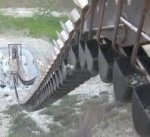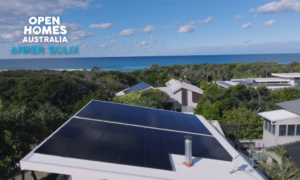As the world increasingly moves towards renewable energy; it will need many individual energy storage locations distributed across the grid to address issues of variability in electricity production.
The idea of a battery being a relatively small device or a series of small boxes cobbled together with wiring is changing fast. Batteries capable of storing huge amounts of energy are being developed using all sort of materials and technologies.
The following are just a few we’ve reported on in the past; some of which are have now been deployed in commercial applications:
– Lithium polysulfide flow battery
– Sodium ion battery
– “Rust” battery
– Zinc air
– Iron phosphate
– Lithium-air
– Molten salt
– Beltway
– Flywheel
– Iron based flow
– Vanadium based flow
– Liquid metal
– Silicon air
More recently, we’ve covered underground compressed air storage and pumped hydro has been around in various forms for many years.
Here are a few more large energy storage systems that have recently been put on our radar.
Isentropic pumps heat from one tank of inert material (e.g. gravel) into another. One tank of gravel is cooled to -160°C while another is heated up to 500°C. The process is reversible with a round trip efficiency claimed to be 72-80%. Advantages include low cost materials, high reliability and durability.
Energy Cache uses ski-lift style structures to lift gravel up a hill. This is stored gravitational potential energy. Advantages include cheap materials, a simple process and materials don’t degrade over time.
Subhydro is also type of gravity storage, using the pressure of sites deep underwater. Water is pumped out of rigid underwater tanks to store energy, then allowed to flow back through water turbines to generate electricity.
Hydrostor is another type of gravity storage, using the pressure of sites deep underwater. Air is pumped into flexible underwater tanks to store energy, then released through air turbines when required to generate power.














































